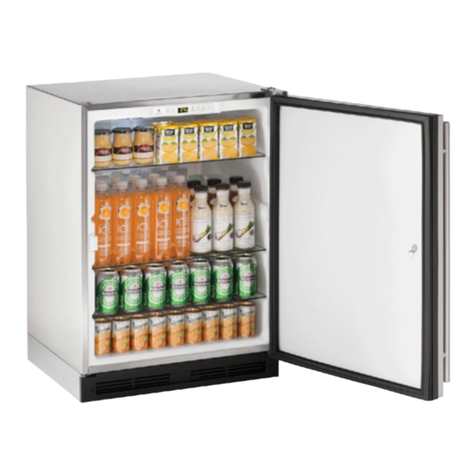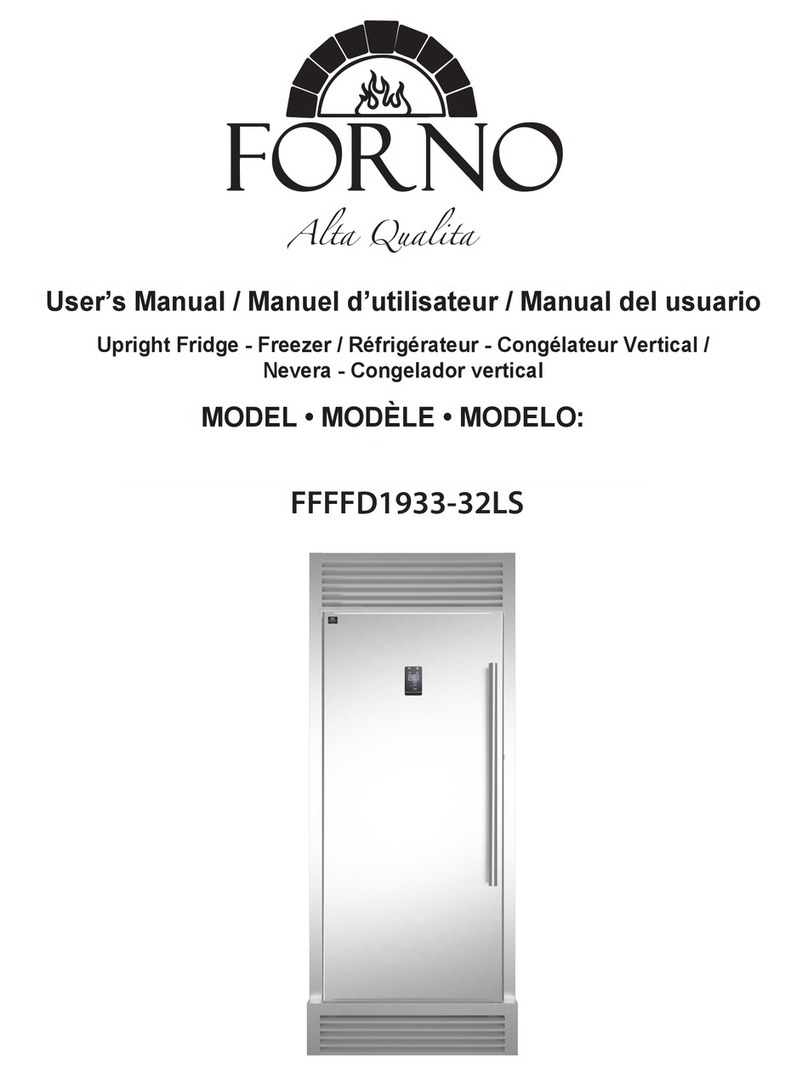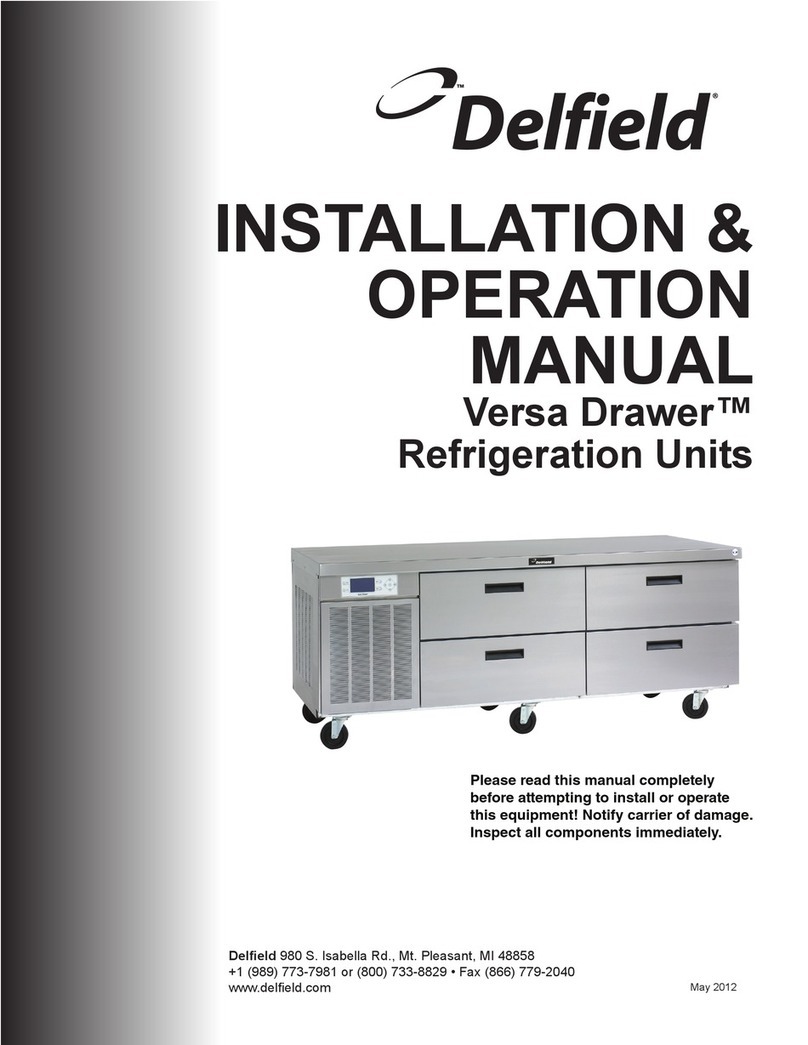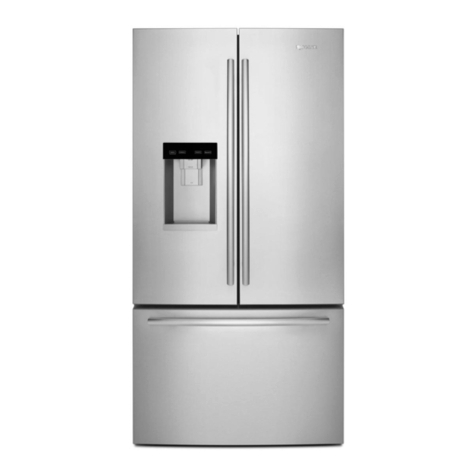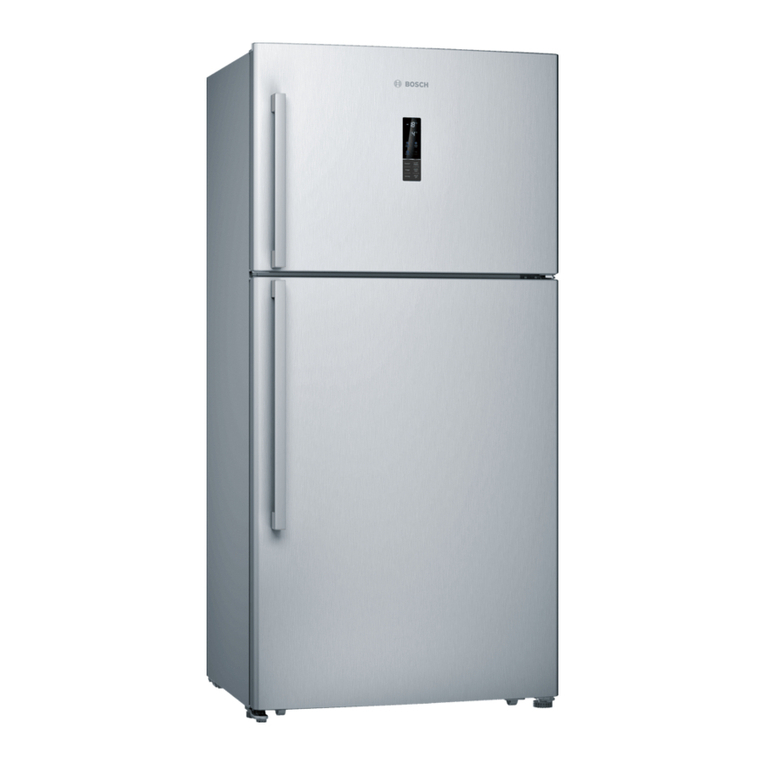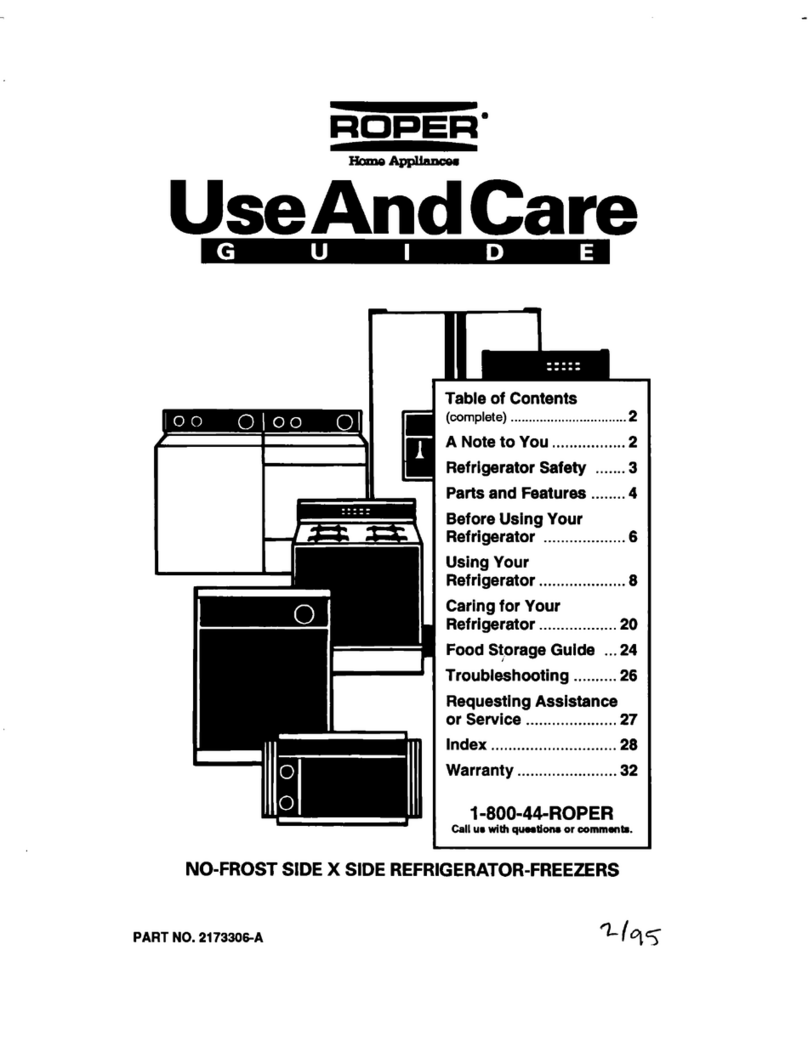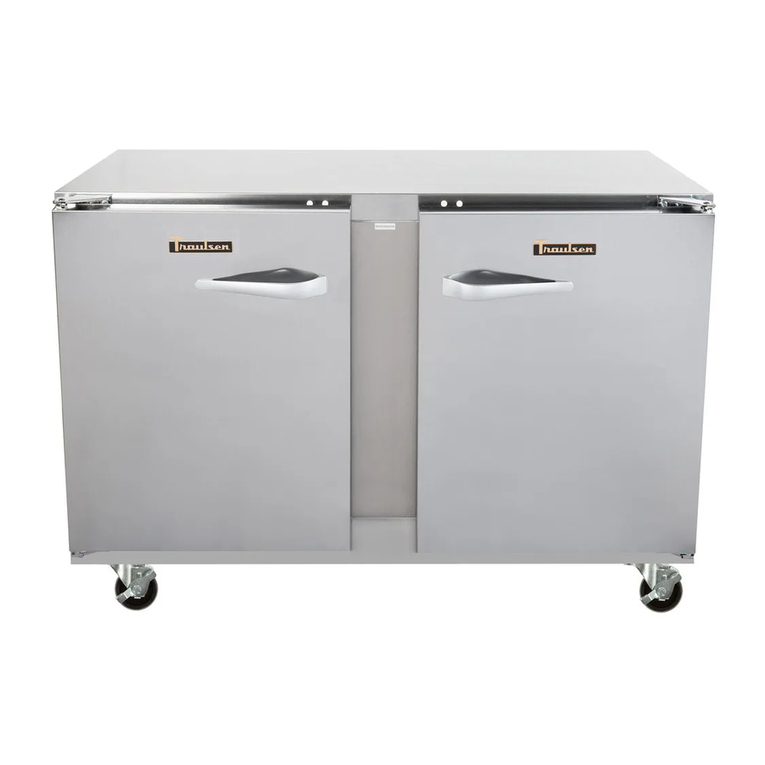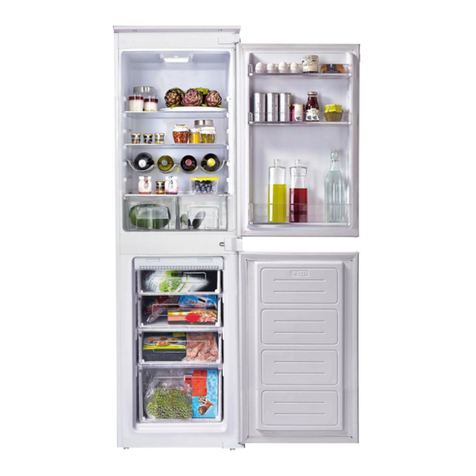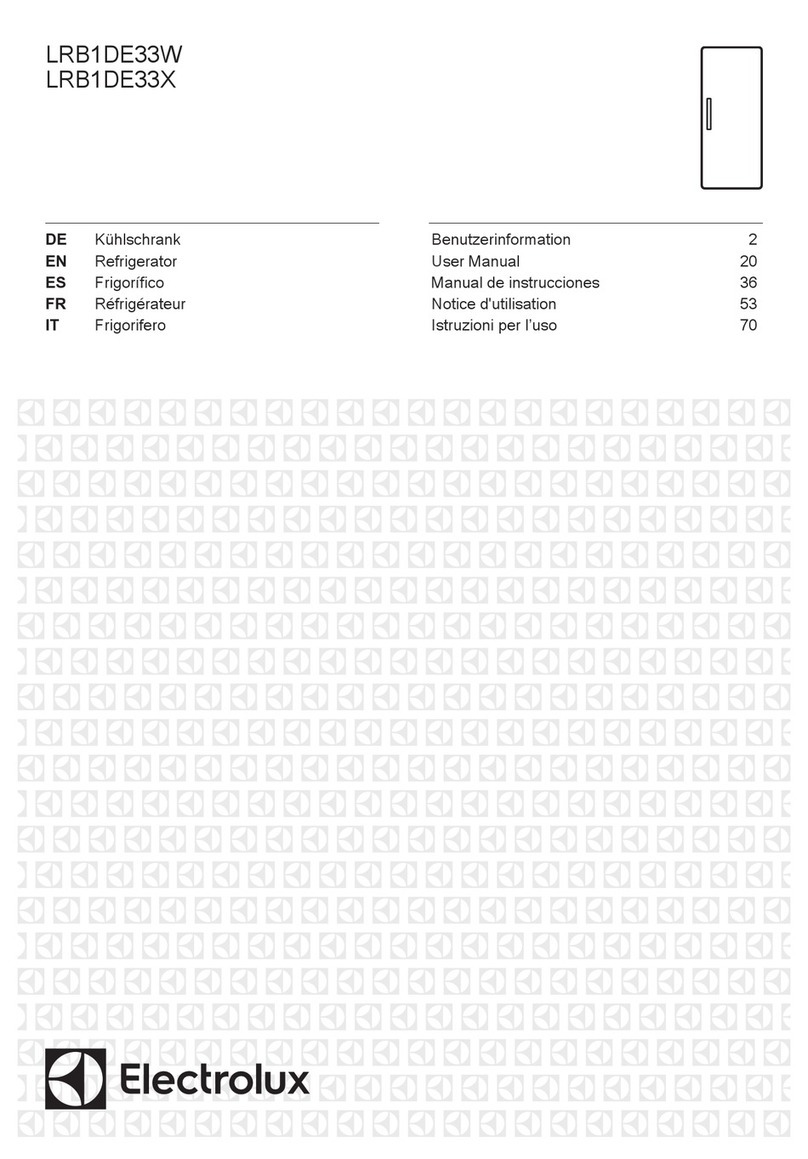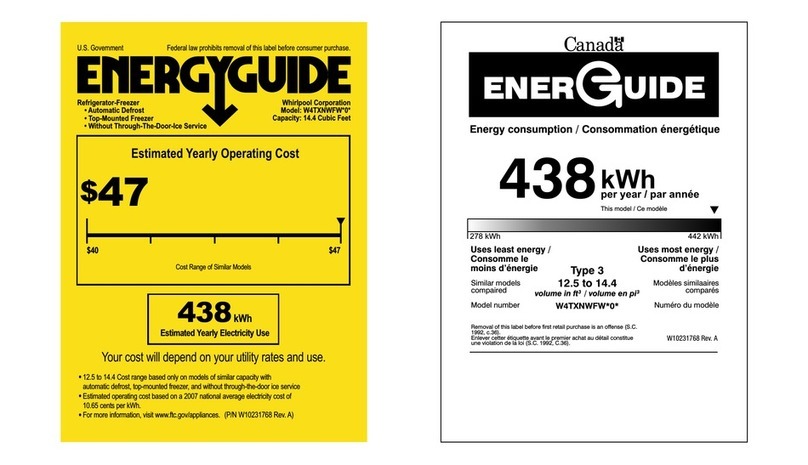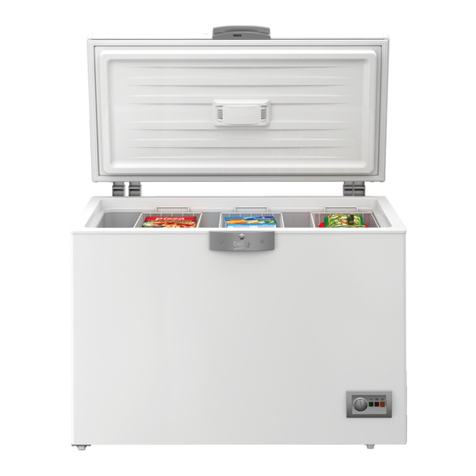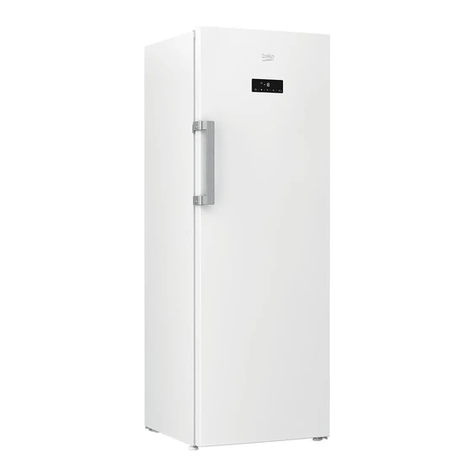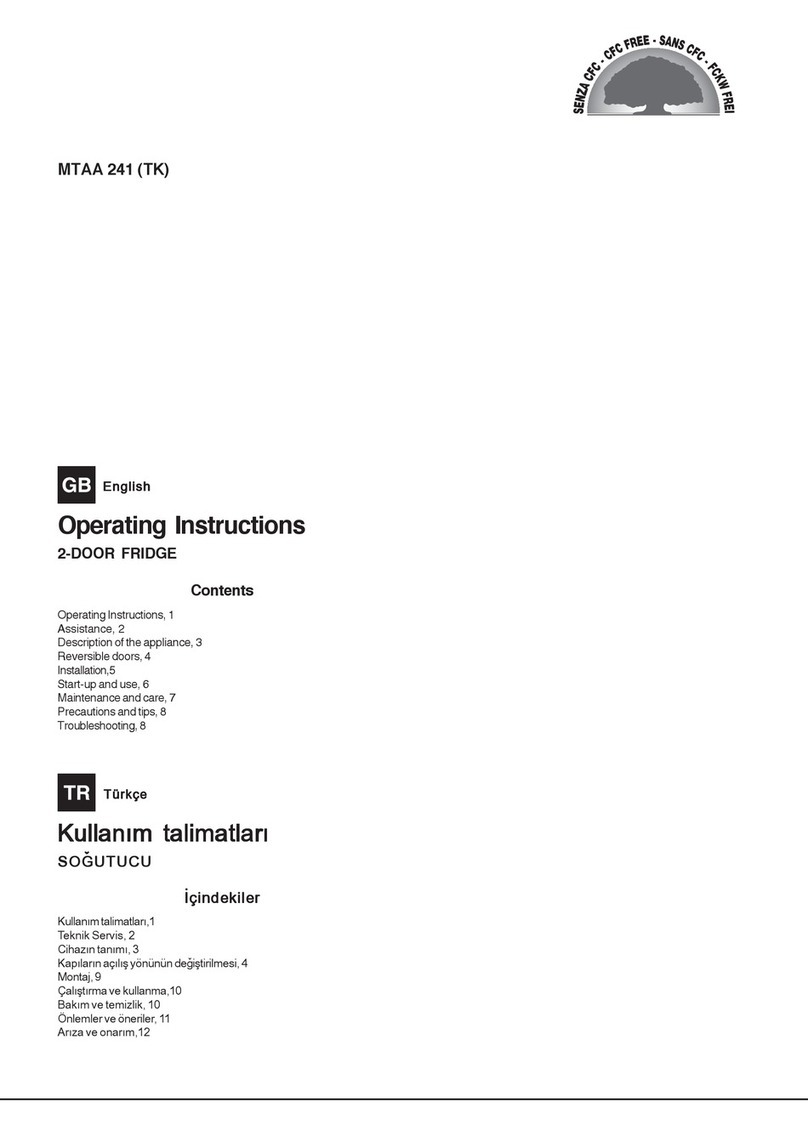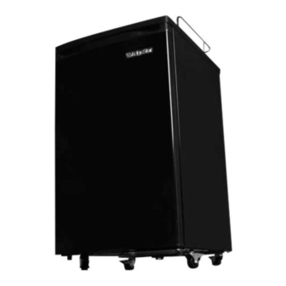Acqua GY-NE242RF User manual

REFRIGERATOR
INSTRUCTION MANUAL
GY-NE242RF

2
Troubleshooting
Safety and warning information..........2
Installing your new appliance .............7
Description of the appliance ...............8
Using your appliance..........................9
Operation..........................................10
CONTENTS
Reversing the door ........................... 11
Helpful hints and tips ........................14
Cleaning and care ............................15
What to do if .....................................16
Disposal of the appliance .................18
SAFETY AND WARNING INFORMATION
For your safety and correct usage, before installing and rst using the
appliance, read this user manual carefully, including its hints and warnings. To
avoid unnecessary mistakes and accidents, it is important to make sure that
all people using the appliance are thoroughly familiar with its operation and
safety features. Save these instructions and be sure that they remain with the
appliance if it is moved or sold, so that anyone using it throughout its life, will
be properly informed on its usage and safety notices. For the safety of life and
property, keep the precautions of these user’s instructions as the manufacturer
is not responsible for damages caused by omission.
Safety for children and others who are vulnerable people
• According to IEC standard This appliance is not intended for use by persons
(including children) with reduced physical, sensory or mental capabilities, or
lack of experience and knowledge, unless they have been given supervision
or instruction concerning use of the appliance by a person responsible for
their safety.
• Children should be supervised to ensure that they do not play with the
appliance.
• Keep all packaging away from children as there is risk of suffocation.
• If you are discarding the appliance, pull the plug out of the socket, cut the
connection cable (as close to the appliance as you can) and remove the
door to prevent children playing from suffering an electric shock or from
closing themselves inside it.

3
General safety
This appliance is intended to be used in domestic households only.
• WARNING — Do not store explosive substances such as aerosol cans with
a ammable propellant in this appliance.
• WARNING — If the supply cord is damaged, it must be replaced by the
manufacturer, its service agent or similarly qualied persons in order to
avoid a hazard.
• WARNING — Keep ventilation openings, in the appliance enclosure or in
the built-in structure, clear of obstruction.
• WARNING — Do not use mechanical devices or other means to accelerate
the defrosting process, other than those recommended by the manufacturer.
• WARNING — Do not damage the refrigerant circuit.
• WARNING — Do not use electrical appliances inside the food storage
compartments of the appliance, unless they are of the type recommended
by the manufacturer.
• WARNING — The refrigerant and insulation blowing gas are ammable.
When disposing of the appliance, do so only at an authorized waste
disposal centre. Do not expose to ame.
• WARNING —When positioning the appliance, ensure the supply cord is not
trapped or damaged.
• WARNING —Do not locate multiple portable socket-outlets or portable
power supplies at the rear of the appliance.
• WARNING—Food needs to be packed in bags before putting into the
refrigerator, and liquids need to be packed in bottles or capped containers to
avoid the problem that the product design structure is not easy to clean.
The symbol is a warning and indicates the refrigerant and insulation
blowing gas are ammable.
Warning: Risk of re / ammable materials

4
Troubleshooting
Refrigerant
The refrigerant isobutene (R600a) is contained within the refrigerant circuit of
the appliance, a natural gas with a high level of environmental compatibility,
which is nevertheless ammable. During transportation and installation of
the appliance, ensure that none of the components of the refrigerant circuit
becomes damaged.
The refrigerant (R600a) is ammable.
• WARNING — Refrigerators contain refrigerant and gases in the insulation.
Refrigerant and gases must be disposed of professionally as they may
cause eye injuries or ignition. Ensure that tubing of the refrigerant circuit is
not damaged prior to proper disposal.
lf the refrigerant circuit should be damaged:
- Avoid opening ames and sources of ignition.
- Thoroughly ventilate the room in which the appliance is situated
It is dangerous to alter the specications or modify this product in any way.
Any damage to the cord may cause a short circuit, re, and/or electric shock.
Electrical safety
1. The power cord must not be lengthened.
2. Make sure that the power plug is not crushed or damaged. A crushed or
damaged power plug may overheat and cause a re.
3. Make sure that you can access the main plug of the appliance.
4. Do not pull the main cable.
5. If the power plug socket is loose, do not insert the power plug. There is a
risk of electric shock or re.
6. You must not operate the appliance without the interior lighting lamp cover.
7. The fridge is only applied with power supply of single phase alternating
current of 220~240V/50Hz. If uctuation of voltage in the district of user is
so large that the voltage exceeds the above scope, for safety sake, be sure
to apply A.C. Automatic voltage regulator of more than 350W to the fridge.
The fridge must employ a special power socket instead of common one with
other electric appliances. Its plug must match the socket with ground wire.

5
Daily use
• Do not store ammable gas or liquids in the appliance, there is a risk of an
explosion.
• Do not operate any electrical appliances in the appliance (e.g. electric ice
cream makers, mixers etc.)
• When unplugging always pull the plug from the mains socket, do not pull on
the cable.
• Do not place hot items near the plastic components of this appliance.
• Do not place food products directly against the air outlet on the rear wall.
• The appliances manufactures storage recommendations should be strictly
adhered to. Refer to relevant instructions for storage.
• Do not place the appliance in direct sunlight.
• Keep burning candles,lamps and other items with naked ames away from
the appliance so that do not set the appliance on re.
• The appliance is intended for keeping food stuff and/or beverages in normal
household as explained in this instruction booklet.
• The appliance is heavy. Care should be taken when moving It.
• Never use the base, drawers, doors etc. to stand on or as supports.
• To avoid items falling and causing injury or damage to the appliance, do not
overload the door racks or put too much food in the crisper drawers.

6
Troubleshooting
Installation Important!
• For electrical connection carefully, follow the instructions given in this
manual. Unpack the appliance and check if there are damages on it.
• Do not connect the appliance if it is damaged. Report possible damages
immediately to the place you bought It. In this case retain packing.
• It is advisable to wait at least four hours before connecting the appliance to
allow the oil to ow back in the compressor.
• Adequate air circulation should be around the appliance, lacking this leads
to overheating. To achieve sufcient ventilation, follow the instructions
relevant to installation.
• Wherever possible the back of the product should not be too close to a
wall to avoid touching or catching warm parts (compressor, condenser) to
prevent the risk of a re, follow the instructions relevant to installation.
• The appliance must not be located close to radiators or cookers.
• Make sure that the mains plug is accessible after the installation of the
appliance.
Service
• This product must be serviced by an authorized Service Center, and only
genuine spare parts must be used.

7
Before using the appliance for the
rst time, you should review the
following tips.
Ventilation of appliance
In order to improve efciency of the
cooling system and save energy,
it is necessary to maintain good
ventilation around the appliance. For
this reason, sufcient clear space
should be available around the
refrigerator.
It is advisable for there to be 50-
70mm of space from the back to the
wall, at least 100mm from its top, at
least 100mm from its side to the wall
and a clear space in front to allow the
doors to open 135°. Please see the
following diagrams.
INSTALLING YOUR NEW APPLIANCE
<10mm
Climate Class Ambient temperature
SN +10oC to +32oC
N +16oC to +32oC
ST +16oC to +38oC
T +16oC to +43oC
• Note: This appliance performs
well within the climate class from
N to ST showed in the table
below.
lt may not work properly if left at
a temperature above or below
the indicated range for a long
period.
• Stand your appliance in a dry
place to avoid moisture damage.
• Keep the appliance out of direct
sunlight, rain or frost. Stand
the appliance away from heat
sources such as stoves, res or
heaters.
Leveling of appliance
• For sufcient leveling and air
circulating in the lower rear
section of the appliance, the
bottom feet may need to be
adjusted.
• You can adjust them manually
using a suitable spanner. To allow
the doors to self-close, tilt the top
backwards by about 10mm.
Before Use
Remove all securing tapes,
wipe the inside of the appliance
with lukewarm water with a little
bicarbonate soda (5mls to 0.5L of
water).
Do not use spray cleaners inside
your unit as this can damage the
interior lining. After cleaning, dry the
appliance thoroughly.

8
Troubleshooting
1. Controller box and LED light
2. Refrigerator shelf
3. Vegetable drawer cover
4. Vegetable drawer
5. Adjustable bottom feet
6 Upper door shelf
7. Lower door shelf
8. Refrigerator door
DESCRIPTION OF THE APPLIANCE
Note: Due to constant
development of our
products, your refrigerator
may differ slightly from
this instruction manual,
but its functions and usage
remain the same.
66
7
8
1
2
3
4
5

9
USING YOUR APPLIANCE
Accessories
1 Movable shelves/trays
• Various glass, plastic storage
shelves or wire trays are
included with your appliance-
different models have different
combinations and different
models have different features.
• The walls of the refrigerator
are equipped with a series of
runners so that the shelves can
be positioned as desired.
Install the door shelf
Remove and install the door shelf
Warning: If the door shelf is
damaged, contact the customer
helpline for assistance. To replace
the door shelf, the below steps can
be followed:
Remove the door shelf
Press the right side of the door shelf
inwardly, while holding the left side.
When the notch of the shelf has
been detached from the refrigerator
door, remove the rack obliquely
upwardly.
Firstly tilt the left side of the door
shelf ,and make sure the notch has
been fastened to the door. Then
press the right side inwardly, push it
down to the right place.
2 Vegetable Drawer
• For storing fruit and vegetables.

10
Troubleshooting
OPERATION
Starting up and temperature
regulation
• Insert the plug of the connection
lead into the plug socket with
protective earth contact. When
the refrigerator compartment
door is opened, the internal
lighting is switched on. After
the fridge has been placed in
position, wait for 5 minutes
before electricity is supplied.
Don’t store anything until the
temperature inside the fridge
becomes low enough, at least 2
hours.
• The temperature selector knob
is located on the right of the
refrigerator compartment.
Setting 0 means:
Off.
Clockwise rotate the knob to turn on
the appliance.
Setting 1 means:
Highest temperature, warmest
setting.
Setting 7 (end-stop) means:
Lowest temperature, coldest setting.
Important! Normally we advise
you select setting of 2, 3 or 4,
if you want the temperature
higher or colder please turn the
knob to warmer or colder setting
accordingly.
Important! High ambient
temperatures (e.g. on hot summer
days) and a cold setting (position 6
to 7) may cause the compressor to
run continuously or even non-stop!
Reason: when the ambient
temperature is high, the compressor
must run continuously to maintain the
low temperature in the appliance.
Changing the LED light
If the LED light is damaged we
recommend it being repaired by a
qualied registered electrician.
If the LED light needs to be replaced,
do not look directly into the light
with an optical instrument to avoid
eye injury. If the LED light strip is
not functioning after being replaced,
consult a qualied registered
electrician.
• Before changing the LED light,
switch off the appliance and unplug
it, or pull the fuse or the circuit
breaker.
• LED light data: 220-240V Max 2W
• Unplug the mains plug.
• To change the LED light, undo the
screw.
• Changing the defective LED light.
• Put the refrigerator back into
operation.

11
REVERSING THE DOOR
NOTE: It is recommended that a
service agent carries out any door
hinge modication at the customers
cost. Any cost or subsequent
damage that is incurred due to poor
modication will not be covered
under warranty.
The side at which the door opens can
be changed, from the right side (as
supplied) to the left side, if required.
Warning! When reversing the door,
the appliance must not be connected
to the mains. Ensure that the plug is
removed from the mains socket.
1. Stand the refrigerator upright.
Open the upper door to take out
all door racks (to avoid damage)
and then close the door.
Remove the door shelf
Tools you will need
Note: If required you may lay the
refrigerator on its back in order to
gain access to the base, you should
rest it on soft foam packaging or
similar maternal to avoid damaging
the backboard of the refrigerator. To
reverse the door, the following steps
are generally recommended.
2. Use a putty knife or thin-blade
screwdriver to prize the screw
hole cover which is at the top
left corner of the refrigerator,
and the upper hinge cover which
is at the top right corner of the
refrigerator.
3. Unscrew the special ange self-
tapping screws which are used
for xing the right upper hinge
part by a 8mm socket driver or
a spanner (please support the
upper door with your hand when
doing it) .

12
Troubleshooting
4. Remove the upper hinge axis,
transfer it to reversed side and
tighten securely, then put it in a
safe place.
7. Lay the refrigerator on soft foam
packaging or similar material.
Remove both adjustable bottom
feet parts, and the lower hinge
part by unscrewing the special
ange self-tapping screws.
5. Remove the door from the lower
hinge
NOTE: When removing the door,
watch for washer(s) between the
lower hinge and the bottom of the
lower door that may stick to the door.
Do not lose.
8. Replace the lower hinge part
to the left side and xing it with
the special ange self-tapping
screws. Replace the adjustable
bottom feet parts to another side
and xing it.
9. Transfer the door to the correct
position, adjust the lower hinge
part.
6. Place it on a smooth surface with
its panel upwards. Loose screw
2and part 1, then install them to
the left side and tighten securely.

13
10.Transfer the upper hinge part and
into the upper hole of the door,
and adjust the position of the door
(please support the door with your
hand when doing it), xing the
upper hinge part with the special
ange self-tapping screws.
11. Install the screw hole cover
on the top right comer of the
refrigerator. Install the upper
hinge cover (which is in the
plastic bag) on the left comer.
Put the other upper hinge cover
into the plastic bag.

14
Troubleshooting
HELPFUL HINTS AND TIPS
Noises during operation
The following noses are
characteristic of refrigeration
appliances:
Clicks Whenever the compressor
switches on or off, a click can be
heard.
Humming As soon as the
compressor is in operation, you can
hear it humming.
Bubbling When refrigerant ows
into thin tubes, you can hear
bubbling or splashing noises.
Splashing Even after the
compressor has been switched off,
this noise can be heard for a short
time.
Energy saving tips
• Do not install the appliance
near cookers, radiators or other
sources of warmth.
• Do not open the door too often
or leave the door open any
longer than necessary.
• Do not set temperature colder
than necessary.
• Make sure the side plates and
back plate of the appliance
are with some distance from
the wall, follow the instructions
relevant to installation.
• lf the diagram shows the right
combination of the drawers,
crisper and shelves, do not
adjust the combination, as this is
designed to be the most energy
efcient refrigeration.
Hints for fresh food refrigeration
To obtain the best performances:
• Do not store warm foods or
evaporating liquids in the
appliance.
• Cover or wrap the food,
particularly if it has a strong avor.
• Position food so that air can
circulate freely around.
• Ensure foods are stored correctly
by the food retailer.

15
CLEANING AND CARE
For hygienic reasons the appliance
(including exterior and interior
accessories) should be cleaned
regularly (at least every two months).
Warning!
The appliance must not be connected
to the mains during cleaning as there
is a danger of electrical shock! Before
cleaning switch the appliance off
and remove the plug from the mains
socket.
Exterior cleaning
Wipe the control panel with a clean,
soft cloth.
• Spray water on to the cleaning
cloth instead of spraying directly
on the surface of the appliance.
This helps ensure an even
distribution of moisture to the
surface.
• Clean the doors, handles and
cabinet surfaces with a mild
detergent and then wipe dry with
a soft cloth.
Caution!
Don’t use sharp objects as they are
likely to scratch the surface.
Don’t use Spray Cleaners, Thinner,
Cardetergent, Clorox, ethereal oil,
abrasive cleaners or organic solvent
such as Benzene for cleaning. They
may damage the surface of the
appliance and may cause re.
Interior cleaning
You should clean the appliance
interior regularly. It will be easier to
clean when food stocks are low. Wipe
the inside with a weak solution of
bicarbonate of soda, and then rinse
with warm water using a wrung-out
sponge or cloth (Dont use spray
cleaner.) Wipe completely dry before
replacing the shelves and drawers.
Thoroughly dry all surfaces and
removable parts before putting them
back into place.
Check the water drain hole on the rear
wall of the refrigerator compartment.
Clear a blocked drain hole, be careful
not to make any damage to the
cabinet by sharp things.
Door seals cleaning
Take care to keep door seals clean.
Sticky food and drinks can cause
seals to stick to the cabinet and
tear when you open the door. Wash
seal with a mild detergent and warm
water. Rinse and dry it thoroughly
after cleaning. Do not use spray
cleaners.
Caution! Only after the door seals
are completely dry should the
appliance be powered on.
Out of use for a long time
• Remove all refrigerated packages.
• Switch off the appliance by turning
the temperature regulator to
position “0”.
• Remove the mains plug or switch
off or disconnect the electricity
supply.
• Clean thoroughly (see section:
Cleaning and Care)
• Leave the door open to avoid
the build up of odors. Note: lf
the appliance contains freezer
compartment.

16
Troubleshooting
If you experience a problem with your
appliance or are concerned that the
appliance is not functioning correctly,
you can carry out some easy checks
before calling for a service, please see
below.
TROUBLESHOOTING
Warning! Do not try to repair the
appliance yourself. If the problem
persists after you have made the
checks mentioned below, contact an
authorised service agent or the shop
where you purchased the product.
Problem Possible Cause and Solution
Appliance is not
working correctly
Check whether the power cord is plugged into the power
outlet properly, try another outlet.
The ambient temperature is too low. Try setting the chamber
temperature to a colder level.
It is normal that the appliance is not operating during the
automatic defrost cycle, or for a short time after the appliance
is switched on to protect the compressor.
Odours from the
compartments
The interior may need to be cleaned.
Ensure the drain hole is clear of food.
Noise from the
appliance
The below sounds are normal for your appliance
•Compressor running noises.
•Air movement noise from the small fan motor in the
appliance compartment or other compartments.
•Gurgling sound similar to water boiling.
•Popping noise during automatic defrosting.
•Clicking noise before the compressor starts.
Other unusual noises are due to the reason below and may
need you to check and take action:
•The cabinet is not level.
•The back or sides of the appliance touches the wall.
•Bottles or containers fallen or rolling.
The motor runs
continuously
It is normal to frequently hear the sound of the motor, it will
need to run more in the following circumstances:
•Temperature setting is set colder than necessary.
•Large amounts of food has recently been stored with the
appliance.
•The temperature outside the appliance is high.
•Doors are kept open too long or too often.
•After installing the appliance or it has been switched off for
a long period of time.

17
TROUBLESHOOTING
A layer of frost
occurs in the
compartment
This model of refrigerator is cyclic and not frost free. Because
of this it is normal for ice/moisture beads to form on the back
wall of this unit.
Check the door seal is still sealing correctly, place a torch in to
see if there is any light you can see.
Temperature
inside is too
warm
•You may have left the doors open too long or too frequently;
•Is the door being kept open by some obstacle;
•Large amounts of food has recently been stored with the
appliance.
•Does the temperature need to be adjusted to a cooler
setting.
Doors will not
close easily
Check whether the top of the appliance is tilted back by 10-
15mm to allow the doors to self-close, or if something inside is
preventing the doors from closing. Are the seals pushed into
the grooves properly.
Units is too hard
to open
This happens because a slight and temporary vacuum occurs
when warm air is let into the appliance when the door is
opened. Wait 30 seconds or use your ngertips to press on
the seal to help ease the vacuum.
Water drips on
the oor
Has the drain hole been cleared, refer to cleaning and care
section of the manual.
The light is not
working
The LED light may be damaged, refer to replacing the LED
lights in cleaning and care section of this manual.
The control system has disabled the lights due to the door
being kept open too long, close and reopen the door to
reactivate this.

18
Troubleshooting
It is prohibited to dispose of this appliance in domestic household waste.
Packaging materials
Packaging materials with the recycle symbol are recyclable. Dispose the
packaging in a suitable collector container to recycle it.
Before disposal of appliance.
1. Disconnect the mains plug from the mains socket.
2. Cut off the mains cable and discard it.
DISPOSAL OF THE APPLIANCE
Correct Disposal of this product
This symbol on the product or in its packaging indicates that this
product may not be treated as household waste. Instead it should be
taken to the appropriate collection point for the recycling of electrical
and electronic equipment. By ensuring this product is disposed of
correctly, you will help prevent potential negative consequences for
the environment and human health, which could otherwise be caused
by inappropriate waste handling of this product. For more detailed
information about recycling of this product, please contact your local
council, your household waste disposal service or the shop where you
purchased the product.


Table of contents
Other Acqua Refrigerator manuals

Acqua
Acqua GY-NE255FR User manual
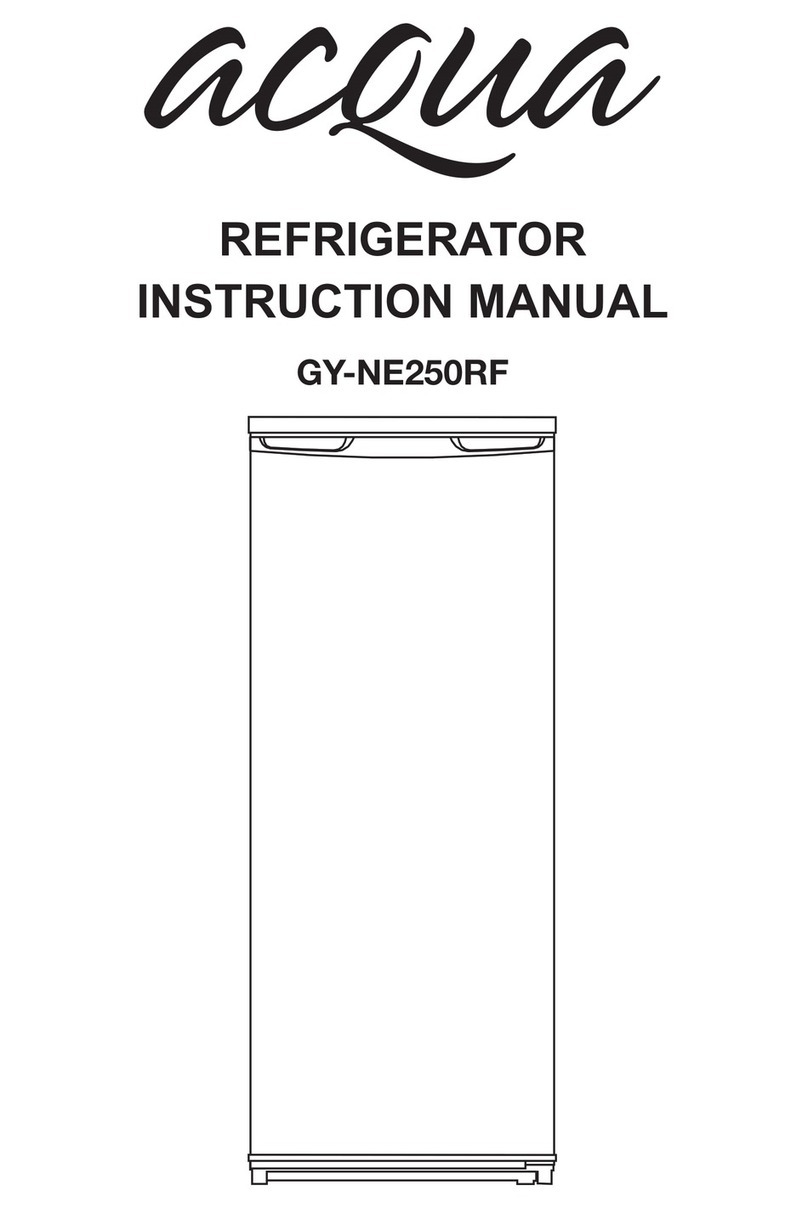
Acqua
Acqua GY-NE250RF User manual
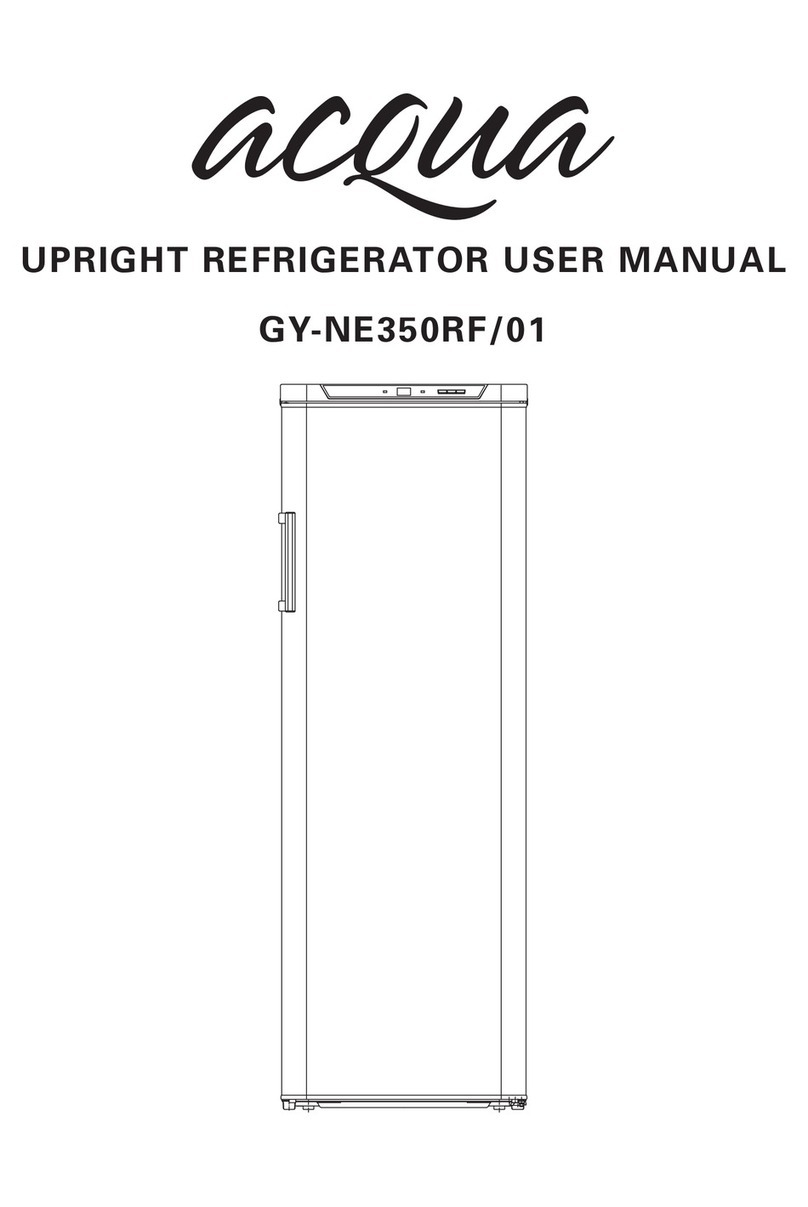
Acqua
Acqua GY-NE350RF/01 User manual
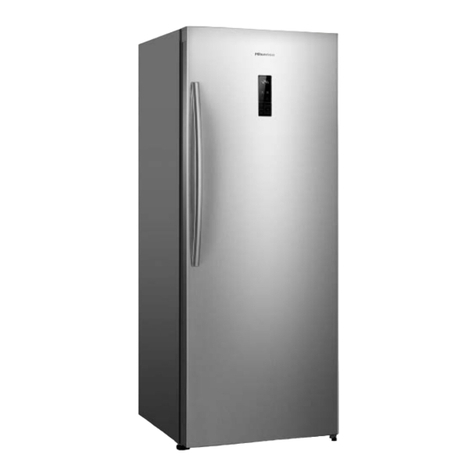
Acqua
Acqua GY-NE42RFW User manual
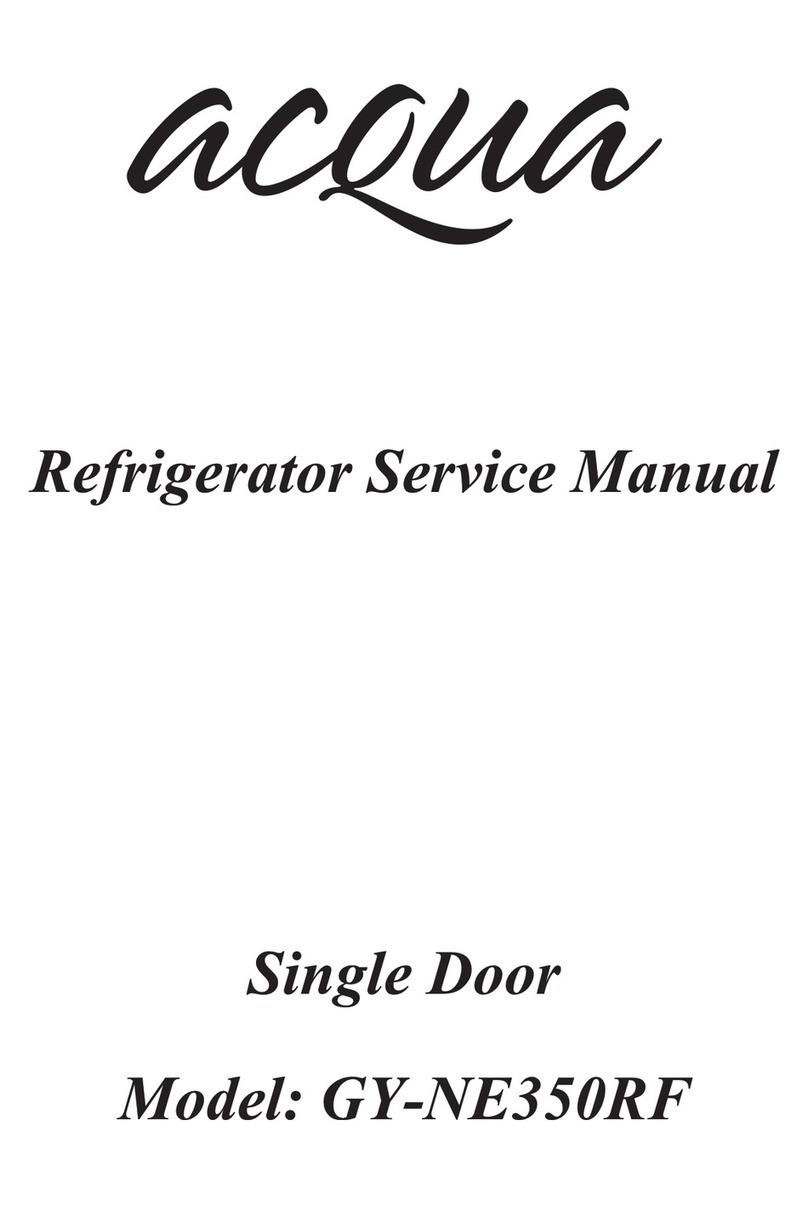
Acqua
Acqua GY-NE350RF User manual

Acqua
Acqua GY-NE250RF User manual
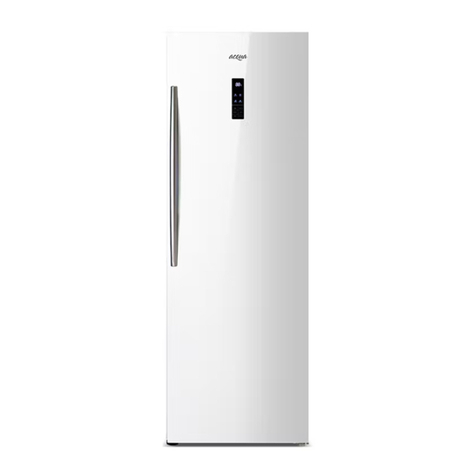
Acqua
Acqua GY-NE325RFW User manual
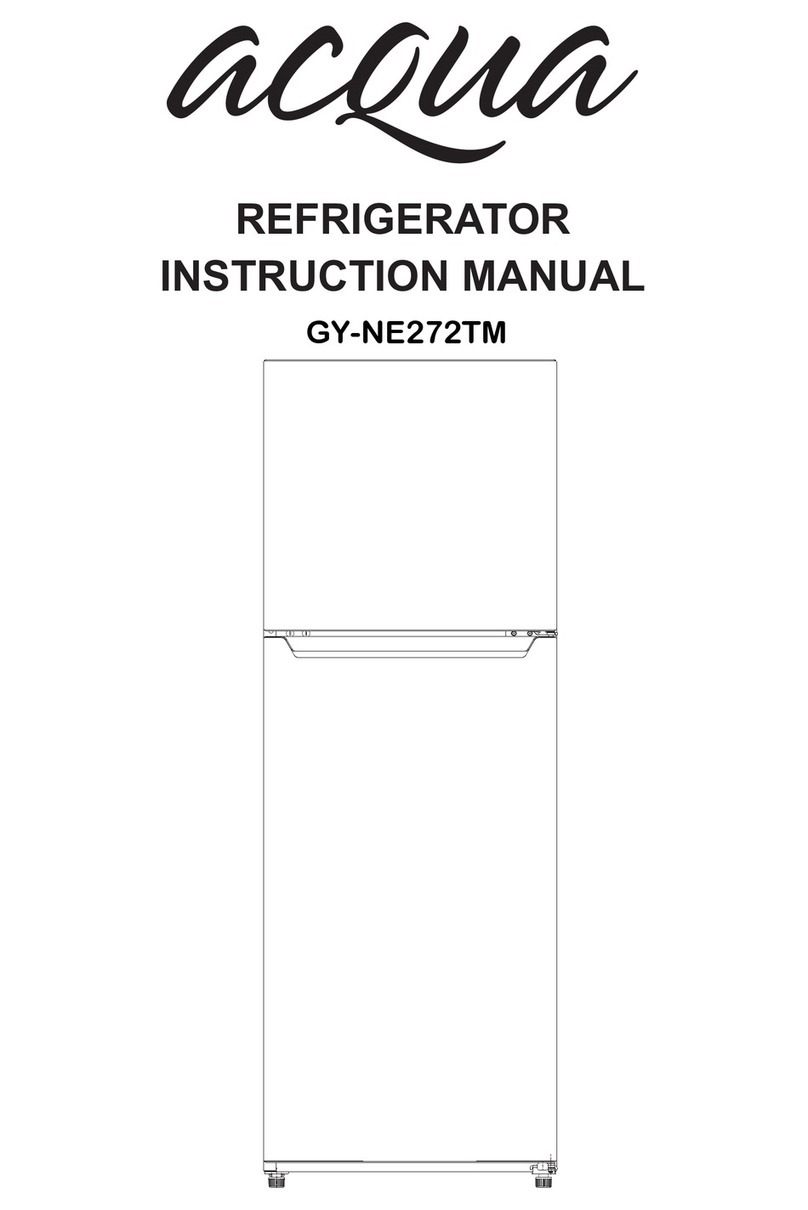
Acqua
Acqua GY-NE272TM User manual
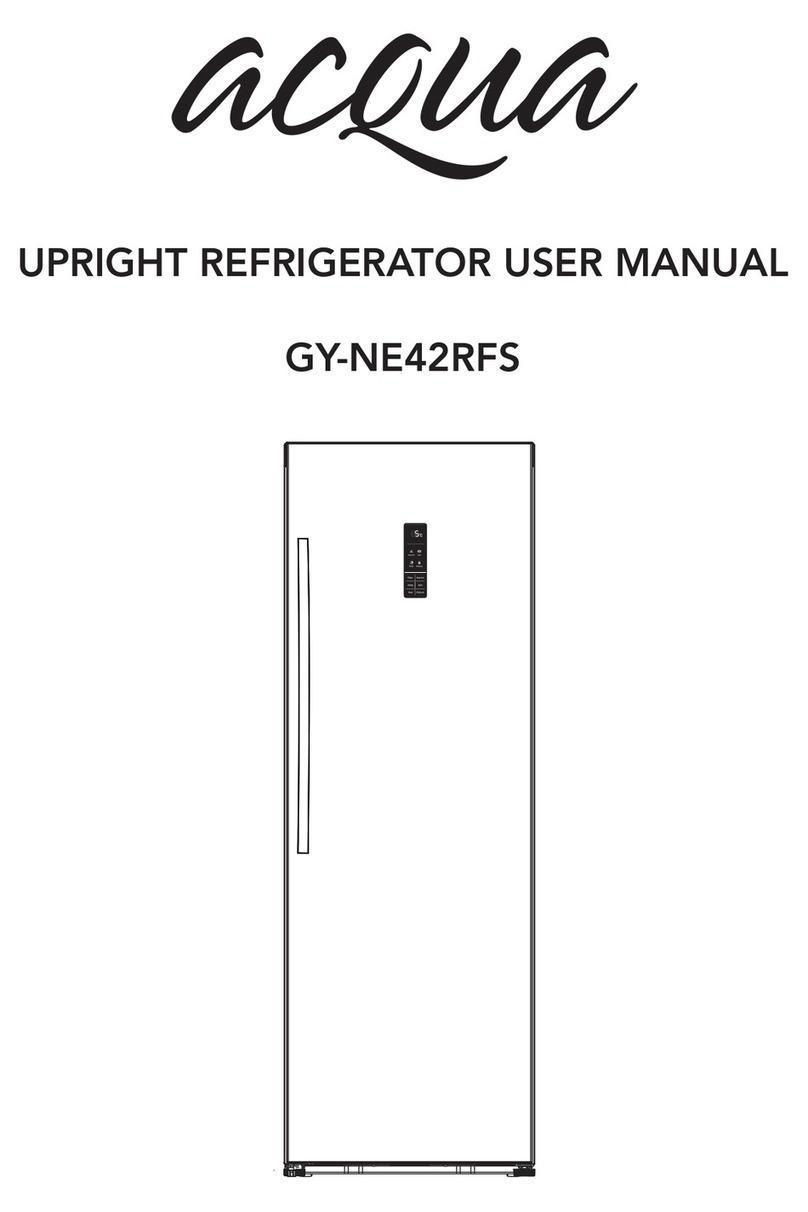
Acqua
Acqua GY-NE42RFS User manual

Acqua
Acqua GY-NE42RFW User manual
